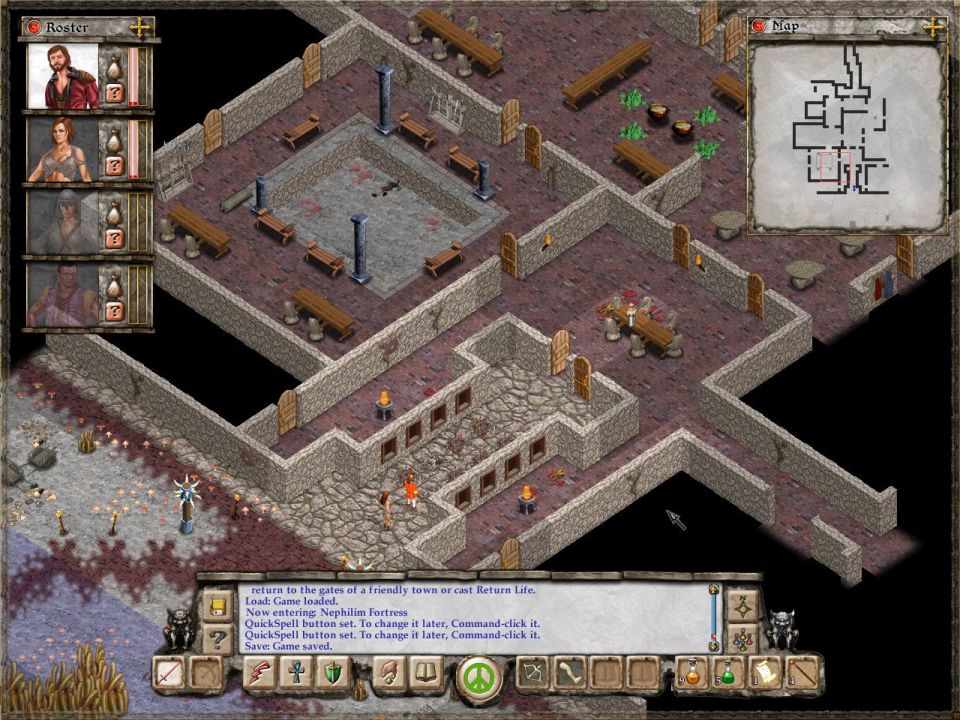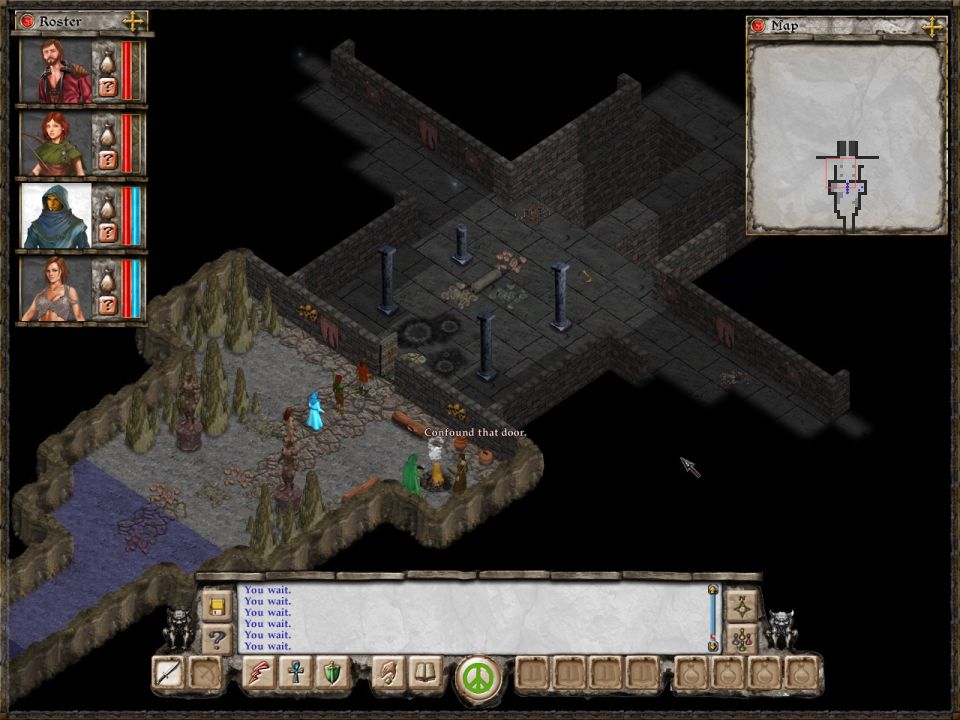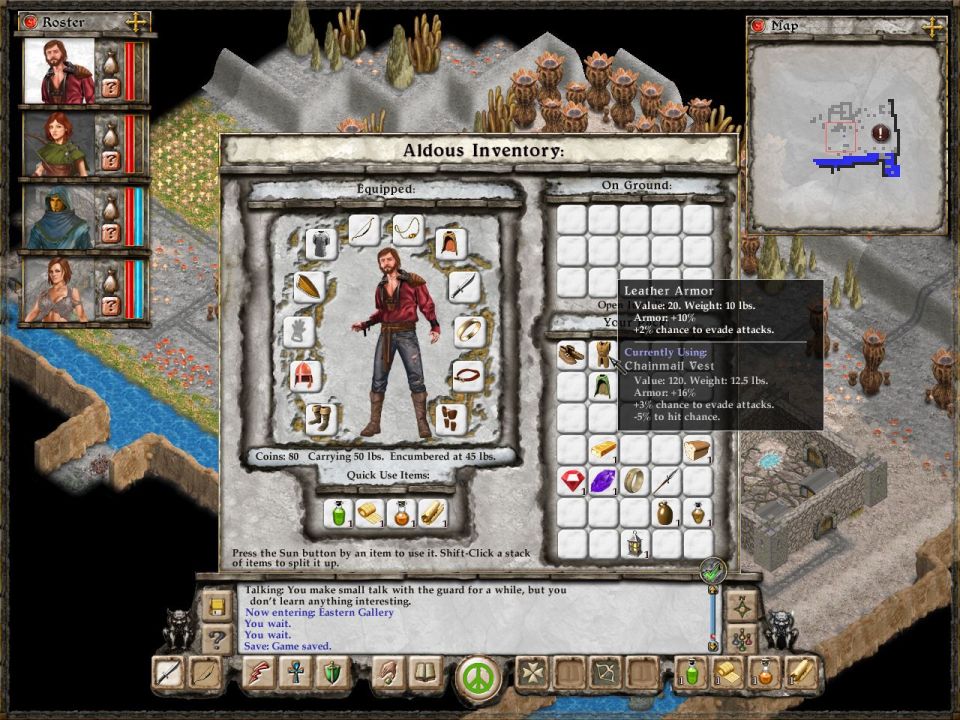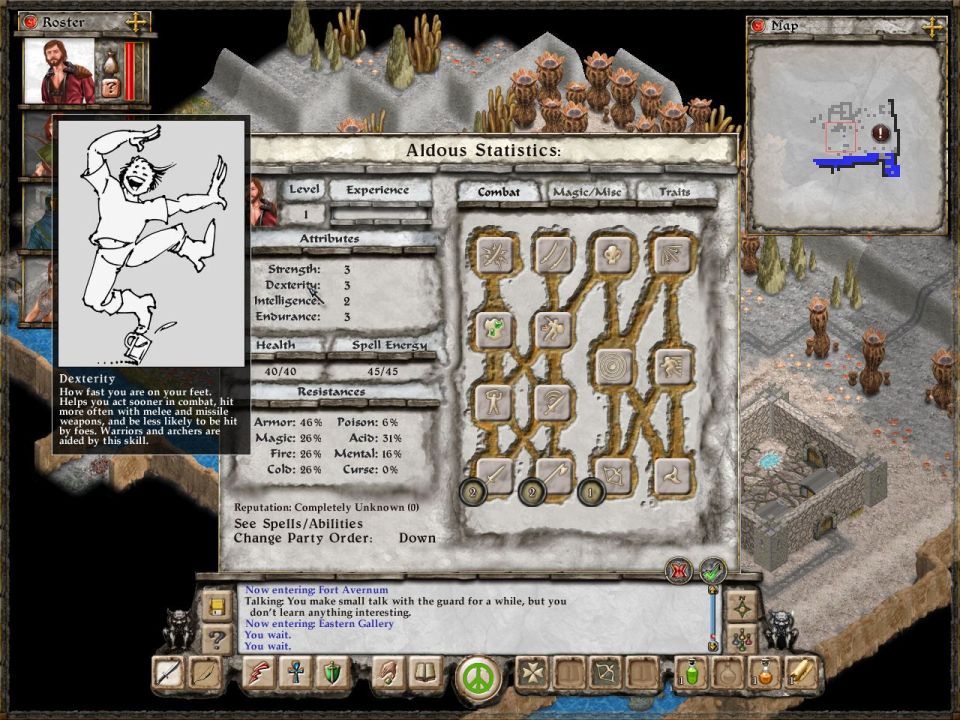Avernum: Escape From the Pit Review
Posted by
FiverBeyond
on
When I heard about the recent release of Avernum from SpiderWeb software, I said to myself “Wait a minute… wasn’t Avernum released more than a decade ago?” The new Avernum is a revamp of the classic RPG title from the early 2000s, but it seems to have fallen off its horse halfway down the trail between ‘re-release’ and ‘rewrite’, meaning that while the game is a definite improvement over its first incarnation, it still looks old and unbalanced. The basic story and mechanics have remained mostly unchanged, while the engine has been given a graphical makeover and new visuals, but you wouldn’t know it from looking. The strict isometric view and indistinct figures look like something from out of the 90s. This in itself isn’t a bad thing at all: I’ve always felt that graphics were a highly overrated aspect of video games, and especially with regards to RPGs, I’d much rather play a well-written 16-bit classic than a messy, boring 3D title. So does Avernum make up for graphical simplicity with strong RPG elements and solid writing? Let’s find out.

The only good quality of the story in Avernum is that it has a solid premise: you and your not-at-all-merry band have been banished from the surface world for some unnamed crime. In this fantasy world all dissidents and rebels are swept under the rug (or rather, under the crust) by being magicked off to Avernum, an underground kingdom completely sealed off from the outside, populated entirely by criminals and bizarre animals, like some medieval version of colonial Australia. It’s a story that provides a nice enough setting, but the writing in Avernum is very cheap, simple stuff. If the 90s’ computer RPG was born from the 70s’ paper-and-pencil ancestor, then it’s fair to say that playing Avernum is like doing a D&D session with a very boring, unimaginative Dungeon Master. Characters are utterly flat and exist only to provide two-sentence pretexts for quests, and although there is just a smidgeon of world development in Avernum, it’s given almost entirely through flat info-dumps where your quest givers flatly explain the ecology of their local town.
When compared to the first RPGs of the 90s (and the very young audience that they were aimed at), it’s not an uncommon flaw, but the point is that we’ve come a long way since then. As the game-playing population has aged and matured, we’ve come to demand more from the medium. Another example of Avernum’s failings here is the lack of quest chains: for the most part, quests in Avernum are completely independent of each other, unconnected to any general plotline. This makes the underground realm of Avernum not so much the backdrop for an epic story (which all RPGs should try to be, in my opinion) but more a “to-do” list, a hodgepodge of mostly optional quests, there to soak up your time and trickle down experience points.

Story aside, the world of Avernum is undoubtedly the strong point of the game. Especially for such a cheap title, Avernum has a vast game map, packed tightly with a wide variety of environments, enemies, and NPCs. There are labyrinths, mazes, wastelands, and, of course, villages, each with its own set of secret passageways and back alleys to be explored. There are haunted crypts, lonely hermits, bandit hideouts, secret caches, and enormous castles. In the world-building department Avernum has enough content to fill up tens of hours of gameplay, assuming that most of the quests are completed. However, the great tragedy of Avernum is that all this loving effort in building such an expansive world is somewhat wasted by other flaws in the game. The outdated graphics and sounds are minor nuisances, but worse is the fact that Avernum doesn’t seem to have a unified style: splash screens are epic, richly colorful scenes, while normal gameplay is straight-forwardly unromantic and technical, with explanatory images as roughly sketched cartoons. The music in the game is decent, but mostly meant only as background noise and never aspiring to much. All these traits mean that Avernum’s world is big, but not very immersive.
The game’s RPG system is fairly thorough for such a small title, including complete training trees for combat and spell maps for magic. Combat proceeds in a turn-based system which is partly dependent on the environment and provides some interesting situations and tactical possibilities, like blocking off enemy escape routes (or opening your own). Spells touch on most of the familiar ‘Final Fantasy’-like concepts, such as hastes, heals, and crowd control, and there are a variety of maladies and combat mechanics to deal with, like Slow, Poison, or Daze. But the game often doesn’t give you enough information to really enjoy the complexity. For example, you can’t see any of the stats on your enemies while in combat, only a health bar to give a rough idea of how much life they have left.

Turn-based combat is very dependent on hasting effects, but you can neither control the order of your party, nor see the current ‘queue’ of actions. You also can’t know anything about your enemies before combat encounters actually begin (and fleeing a combat situation is usually impossible). This means that the game quickly devolves into wasted time and effort: you may travel a far distance to try out a quest, only to discover as soon as you begin combat that you have no chance of surviving, and are thus forced to load your last saved game. This kind of design is especially hurtful because it means that most of the good aspects of Avernum are wasted: although there are interesting encounters to fight through, most of the game is spent testing out options and then having to reload your saved game again and again until you’re finally lucky enough happen by chance on an encounter that you can handle.
Avernum’s take on difficulty is a particular weak spot. First and foremost on the list of problems is that opportunities for grinding are almost nonexistent. Although the game does have a handful of wandering monster groups to encounter, and very small amounts of respawning enemies, for the most part if your party currently doesn’t have enough levels to take on the available quests, you are stuck. This doesn’t sound too bad except that there are no repeatable quests, so you can quickly find yourself in a position where every one of the fifteen quests you’ve accepted is too difficult, and there are literally no easier quests to attempt. It’s bad enough that any RPG requires grinding… but Avernum goes one step worse by treating grinding like a rare treat.

While stuck on the difficulty curve, most of my time playing Avernum was spent traversing the entire “easy side” of the map, double checking each of my quests to make sure that they were too difficult for my party, and gleefully snatching at any chance of a random monster fight. If you’re lucky, at this stage you might get a single fight every ten-minutes or so (and this wasn’t even the hardest difficulty). Avernum’s game tips sometimes remind you that if the game is too hard, you can always turn down the difficulty setting, but this stagnation feels much more like a design flaw than an issue of the game just ‘being tough’.
The sad part about all of Avernum’s flaws is that they stop the player from enjoying its few strengths. In nearly every respect, Avernum is outdated. This isn’t simply limited to the engine and graphics, but also to the writing, storyline, and game design. The individual combat encounters themselves can be fun enough, with a robust turn-based system and some interesting enemy combinations, but the rest of the game seems to actively get in the way of this fun. All this together means that Avernum’s primary strength is arguably its charm: playing this RPG reminded me of the nineties, and the age of shareware RPGs, but it also reminded me of why the new RPGs really are so much better. I couldn’t help but think that here was a missed opportunity. I’d consider myself a fan of the classic party-based role playing game system, and I even think the genre is a little underrepresented in the market, but Avernum sadly isn’t up to the challenge of filling this hole. The Avernum series extends for six full games, certain to be re-released in the future, but I’d be surprised if this first title inspired players to excitedly try the others out. It may be that Avernum’s failings in graphics and sounds are made up for by good writing in later sequels, but I for one am certainly not willing to wade through several second-rate RPGs to find out.
